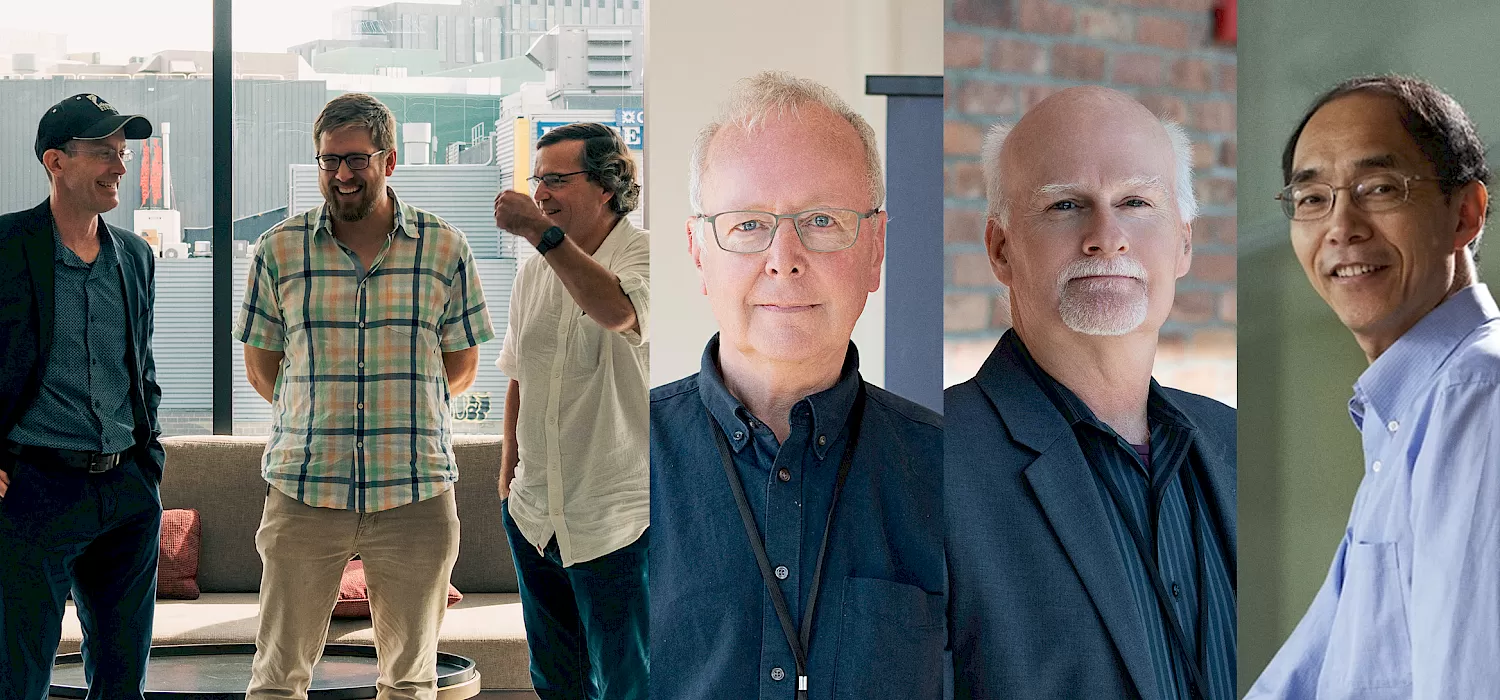Kicking Off Our New MECP2 Editing Consortium
A new consortium to develop next-generation genetic medicines for Rett syndrome.

We’ve pioneered a consortium model for Rett syndrome research, bringing together researchers with complementary subspecialties to accelerate progress through unprecedented data sharing and collaboration. Research from the MECP2 Consortium and Gene Therapy Consortium laid the foundation for the development of two Rett gene therapy candidates that are currently in clinical trials.
Buoyed by that success, RSRT has launched a new consortium to develop next-generation genetic medicines for Rett syndrome: The MECP2 Editing Consortium. Supported with a $7 million investment from RSRT, the new Consortium is a collaboration between six labs, aimed at creating DNA and RNA editing therapies for Rett syndrome. The member labs’ expertise spans MECP2 and Rett syndrome genetics, MECP2 mouse and nonhuman primate models, CRISPR-based genome-editing systems including base editing and prime editing, RNA biochemistry, and the ADAR RNA editing system. RSRT’s internal team of Chief Technology Officer Bob Deans, PhD, Chief Medical Officer Randy Carpenter, MD, and Chief Scientific Officer Jana von Hehn, PhD, expand the labs’ expertise with decades of experience in the biotech industry and advancing products through clinical trials.
A major component of RSRT’s Roadmap to Cures, the new Consortium has an ambitious timeline: bringing three new candidate genetic medicines for Rett into clinical trials over the next four years.
“RSRT doesn’t just write checks,” says Deans. “RSRT is the only Rett foundation in the world that is actually guiding the shape of research and potential cures.”
About 20 researchers from the six member labs of the MECP2 Editing Consortium attended a kickoff event in Boston in January 2024. Each group presented their research, sharing core data gathered so far and their action plans for next steps. The consortium model is based around mutual innovation to reach common goals, with researchers sharing unpublished data years before it becomes publicly available.
“We’ve worked with RSRT for a long time. Monica Coenraads is a dynamo who is constantly pushing to get a cure for Rett syndrome,” says Jacky Guy, a senior researcher in the Adrian Bird lab at the University of Edinburgh and the mastermind behind the famous 2007 mice reversal experiment. “I’m excited to be part of the MECP2 Editing Consortium because we learned so much as part of RSRT’s MECP2 Consortium. With the consortium format, there’s open sharing of ideas and reagents and collaboration to solve problems.”
“By the time things are published, the data is already a few years old,” says Guoping Feng, a member of the MECP2 Editing Consortium and head of a lab at the Massachusetts Institute of Technology. “What we’re learning here is cutting-edge — what people are trying, what mistakes they’ve made, what worked and didn’t work. Being able to share results as they happen really speeds up research. We’re even learning about new technologies that aren’t even published yet.”
“Everyone is happy to share their knowledge and help each other out,” says Deans. “I think this comes from the sense of trust that Monica has inspired in RSRT. And with that trust, people can share and learn a lot more effectively.”
The RSRT leadership team ensured that not only the heads of labs, but early career researchers including talented graduate students and postdoctoral researchers, attended the kickoff. Exposing young researchers to the excitement and impact of working in rare disease encourages them to continue down this path as they move forward in their careers.
“Our mission in the Consortium is not promoting our own careers,” says Feng. “We all have one mission and that’s to solve Rett syndrome for the benefit of patients. And that’s really good for young researchers to see — that we can work together, put our own interests aside, and help patients.”
Deans and the RSRT team led the group through a discussion of public-private partnerships, intellectual property concerns for moving to the clinic, and shaping data into reports that can be submitted to regulatory agencies like the FDA. The investment in editing approaches is a calculated choice by RSRT: hopes are high for gene therapy, but RSRT wants to be ready with more shots on goal to make sure the largest number of Rett patients can benefit in the greatest way possible.
“We are excited about the gene therapy clinical trials,” says Deans. “But the first genetic medicine out of the gate is unlikely to be the ultimate best genetic medicine. So, we want to be ready to go with more approaches, more trials, more shots on goals. We’re excited to see which of these approaches are the most effective.”
“Rett syndrome is tricky because too little MECP2 is harmful, but so is too much,” says Guy. “Editing seems like an ideal approach to get the level of protein just right.”
“We understand the genetic cause of Rett syndrome, and in many cases a single DNA or RNA edit could restore a healthy version of the gene,” says Chenjie Shen, a postdoctoral researcher in the Feng lab. “I’m excited about base editing because it’s even more effective than traditional CRISPR editing. And ultimately, I think that Rett syndrome can serve as a model to establish a toolbox for gene editing and delivery to the central nervous system.”
We look forward to keeping our community updated on the Consortium’s progress.


